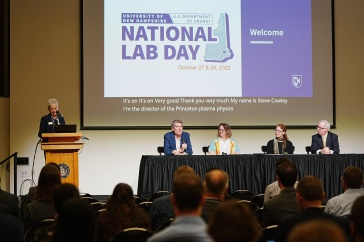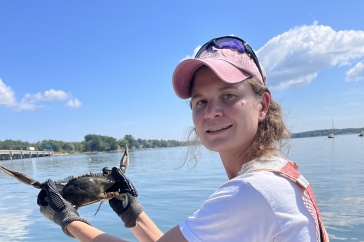
On a sandbar in the Squamscott River in Exeter, UNH researchers and collaborators from New Hampshire Fish and Game and Coastal Research Volunteers collect rainbow smelt caught in a fyke net.
The research, led by Nathan Furey, assistant professor of biological sciences, aims to quantify the importance of the Great Bay Estuary to the regional populations of rainbow smelt, which are important to ice fishing but have declined in New Hampshire and are listed as a Species of Concern by state and federal agencies.
“Even though we know rainbow smelt use estuaries for some of their life history we don't know for how long nor where within the estuaries,” leaving a large gap in our ability to conserve the fish, says Furey. The New Hampshire Sea Grant-funded research will help future managers of smelt better protect and enhance populations of rainbow smelt and revive a threatened ice fishery.
-
Written By:
Tim Briggs | NH Sea Grant | Tim.Briggs@unh.edu




















































